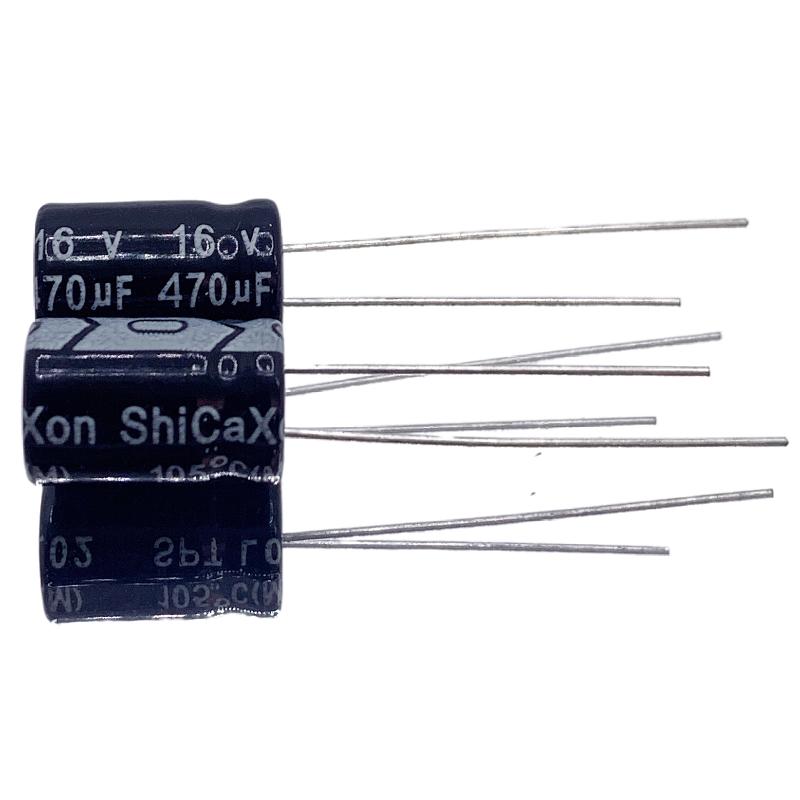Common problem
The difference between chip e-cap and plug-in e-cap
Source:本站 | Time:2022-05-05 | Read:428
The fundamental difference between chip electrolytic capacitors and plug-in electrolytic capacitors
In the electronic components we often consider some products, is it better to choose SMD or plug-in? How to choose? How to choose the more suitable electronic components according to the development of the market? Here we will talk about the fundamental difference between chip electrolytic capacitors and plug-in electrolytic capacitors. What information can we get from their fundamental differences.
The fundamental difference between chip electrolytic capacitors and plug-in electrolytic capacitors is the installation method
1. The electrolytic capacitor itself is upright on the PCB board regardless of the mounting process of the plug-in electrolytic capacitor or the chip electrolytic capacitor. The fundamental difference is that the SMT (Surface Mount Technology) mounted capacitors have a black rubber base at the bottom. Why do SMD electrolytic capacitors need to be installed with a rubber base? Because the combination of the capacitor pins and the PCB will be more stable. In addition, from the literal meaning of SMT, we can understand that the solder joint of surface soldering is on the front side of PCB, and the pin will not penetrate the PCB, while the pin of plug-in electrolytic capacitor will penetrate the PCB, and the solder joint is on the back side of PCB. 2.
2. SMD electrolytic capacitors can also be converted into straight electrolytic capacitors, because many DIY players like to transform their own motherboards or graphics cards, straight electrolytic capacitors can be soldered manually with soldering irons, while SMD electrolytic capacitors can only be soldered using expensive SMD machines. Remove the SMD into a straight plug.
3. This reasoning is also applicable to the factory, the strength of the large factories in order to improve production capacity, will certainly purchase multiple SMT chip machine to expand production lines, so its graphics cards more chip capacitors for fully automatic installation. The general small factory can not afford to buy SMD machine or limited number of SMD machine, only for the installation of essential SMD small resistors small capacitors and so on, so its electrolytic capacitors are mostly straight plug type.
4. In addition, the cost of machinery is relatively low compared to the cost of labor in countries with small populations, and the cost of labor is relatively expensive, so most of them tend to SMT chip electrolytic capacitor manufacturing. For China, a country with a large population, the cost of labor will be lower than the cost of machinery, so more manufacturers are more willing to use the plug-in installation. Of course, the plug-in type is mostly used for low-end and mid-range graphics cards, and high-end graphics cards will try to avoid manual soldering to ensure quality.
The advantage of plug-in electrolytic capacitor is that it does not require high equipment and low labor cost, while the advantage of chip electrolytic capacitor is fully automated assembly line operation, high capacity and high precision, and the chip electrolytic capacitor will not be easily damaged in transit like plug-in electrolytic capacitor.

In the electronic components we often consider some products, is it better to choose SMD or plug-in? How to choose? How to choose the more suitable electronic components according to the development of the market? Here we will talk about the fundamental difference between chip electrolytic capacitors and plug-in electrolytic capacitors. What information can we get from their fundamental differences.
The fundamental difference between chip electrolytic capacitors and plug-in electrolytic capacitors is the installation method
1. The electrolytic capacitor itself is upright on the PCB board regardless of the mounting process of the plug-in electrolytic capacitor or the chip electrolytic capacitor. The fundamental difference is that the SMT (Surface Mount Technology) mounted capacitors have a black rubber base at the bottom. Why do SMD electrolytic capacitors need to be installed with a rubber base? Because the combination of the capacitor pins and the PCB will be more stable. In addition, from the literal meaning of SMT, we can understand that the solder joint of surface soldering is on the front side of PCB, and the pin will not penetrate the PCB, while the pin of plug-in electrolytic capacitor will penetrate the PCB, and the solder joint is on the back side of PCB. 2.
2. SMD electrolytic capacitors can also be converted into straight electrolytic capacitors, because many DIY players like to transform their own motherboards or graphics cards, straight electrolytic capacitors can be soldered manually with soldering irons, while SMD electrolytic capacitors can only be soldered using expensive SMD machines. Remove the SMD into a straight plug.
3. This reasoning is also applicable to the factory, the strength of the large factories in order to improve production capacity, will certainly purchase multiple SMT chip machine to expand production lines, so its graphics cards more chip capacitors for fully automatic installation. The general small factory can not afford to buy SMD machine or limited number of SMD machine, only for the installation of essential SMD small resistors small capacitors and so on, so its electrolytic capacitors are mostly straight plug type.
4. In addition, the cost of machinery is relatively low compared to the cost of labor in countries with small populations, and the cost of labor is relatively expensive, so most of them tend to SMT chip electrolytic capacitor manufacturing. For China, a country with a large population, the cost of labor will be lower than the cost of machinery, so more manufacturers are more willing to use the plug-in installation. Of course, the plug-in type is mostly used for low-end and mid-range graphics cards, and high-end graphics cards will try to avoid manual soldering to ensure quality.
The advantage of plug-in electrolytic capacitor is that it does not require high equipment and low labor cost, while the advantage of chip electrolytic capacitor is fully automated assembly line operation, high capacity and high precision, and the chip electrolytic capacitor will not be easily damaged in transit like plug-in electrolytic capacitor.




